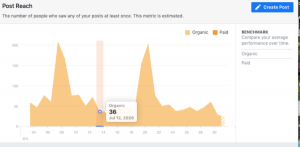
Remember the good old days, when all you needed to make an impression on social media was quality content?
Yeah, me neither. Well, barely.
Don’t get me wrong — quality is still king, especially given the effusion of crap content that’s clogging the social web. It’s just that, with everybody and their dogs getting on the social media bandwagon, it’s no longer enough.
And then there’s the whole “reachpocalypse” issue, where Facebook basically invited us all to say goodbye to organic reach. I had to laugh when I saw that announcement, because I’d been watching my own reach decline for months. It’s not at all unusual for me to see those dreaded words “1 person reached” at the bottom of a post, despite having a few hundred in my fan base.
Here’s the deal: With thousands — in some cases, millions — of brands vying for that coveted spot on users’ social feeds, there has to be a way of deciding who’s in and who’s out. Yes, each social network has algorithms that chug away at predicting which posts a particular user would most appreciate seeing at a particular time, but that barely makes a dent in the problem.
It’s the basic economic conundrum of demand (for slots in the feed) far outnumbering supply.
Enter the paid social post.
The bad news is that, if we want anything to be seen, we’re going to have to put some cash behind it. Period. Deal with it.
The good news is that it really doesn’t take a fortune to get in front of a decent number of users, and the targeting features are actually pretty good. We can start small, watch what happens, and plan and adjust from there.
So if you’ve not yet dipped your toe into the pool of paid social posts, give it a try. You can run a quick two-to-three-day campaign and just see what happens.
A few words of advice:
- Start small. Try forking over $ 5 to promote a post for a day or two.
- Target your audience. Target your promoted post to the exact people you want to see it; failing to do so tends to result in wasted dollars and much frustration.
- Watch your results. The analytics on all three big social networks (Facebook, LinkedIn, Twitter) are actually pretty good, so keep an eye on what happens.
- Keep it classy. Just because it’s “advertising,” doesn’t mean you need to treat your promoted post like a bullhorn. Overly aggressive sales tactics will turn people off just as much in a paid post as they do in an unpaid post.
- Think strategically. What results do you want from this post? Do you want to drive audiences to a landing page so they can download your latest e-book? Are you trying to get sign-ups for a webinar? Have a specific goal in mind and build your post — and your targeting — around it.
What’s been your experience in using promoted social posts? Tell us about it in the comments — we’d love to hear from you!
(272)







